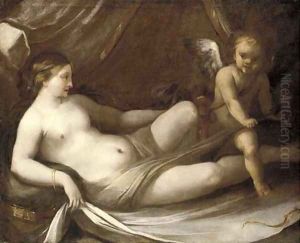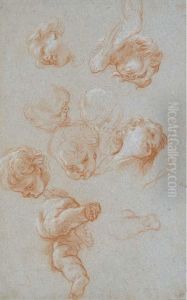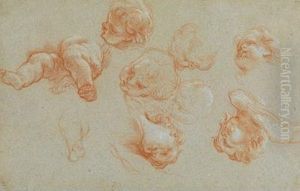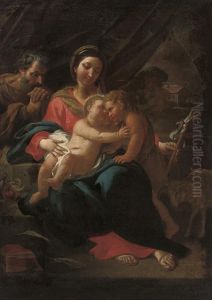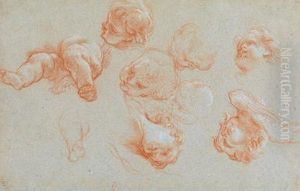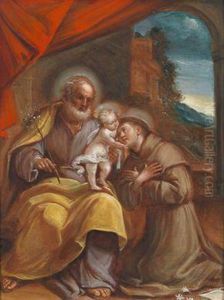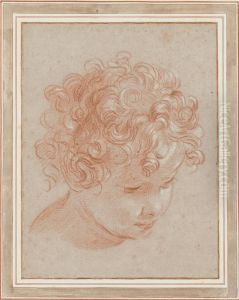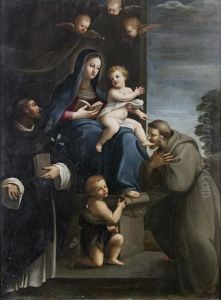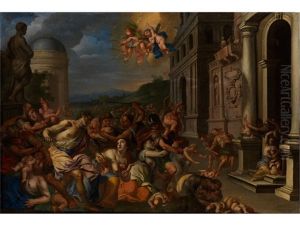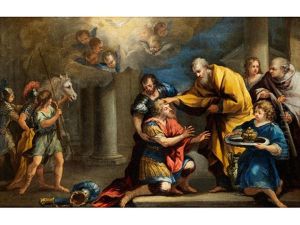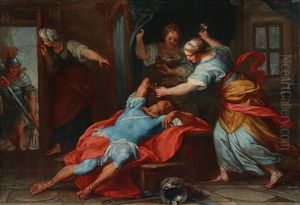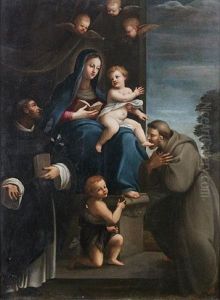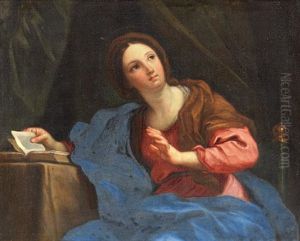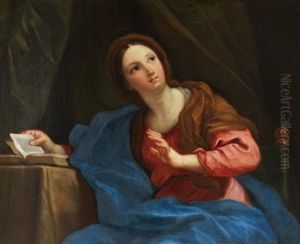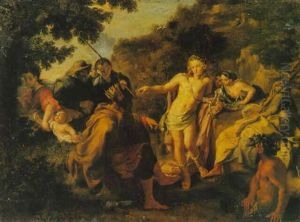Niccolo Berrettoni Paintings
Niccolò Berrettoni was an Italian painter and engraver, primarily known for his work in the Baroque style. Born on July 2, 1637, in Montefeltro, Italy, Berrettoni showed an early aptitude for art and was initially trained by his uncle, the painter Giovanni Francesco Nagli, also known as il Centino. His talent was recognized from a young age, and he went on to further his studies in Rome, a city that was a vibrant center for artistic innovation and patronage during the 17th century.
In Rome, Berrettoni became a student of the illustrious Pietro da Cortona, who was one of the leading proponents of Baroque painting at the time. Under Cortona's guidance, Berrettoni honed his skills and developed a style characterized by dynamic compositions, dramatic use of light and shadow, and a rich color palette. He became proficient in large-scale fresco painting, which was a dominant medium in Baroque art for decorating the expansive walls and ceilings of churches, palaces, and public buildings.
Berrettoni's work quickly garnered attention, and he received commissions from prominent patrons, including members of the papal court and Roman nobility. Some of his notable works include frescoes in the churches of Santa Maria in Via Lata, San Carlo al Corso, and the Capella Antamori in San Girolamo della Carità, all located in Rome. His style embodied the grandeur and emotional intensity typical of the high Baroque period.
Beyond frescoes, Berrettoni was also accomplished in oil painting and produced a number of altarpieces and smaller devotional works. His engravings, albeit less well-known, contributed to the dissemination of the Baroque style throughout Italy and beyond.
Despite his success, Berrettoni's life was cut short when he died on February 6, 1682, at the age of 44. His works continue to be appreciated for their vibrancy and expressive power, and they contribute to the rich tapestry of Baroque art. Berrettoni's influence was felt not only during his lifetime but also posthumously, as his paintings and teachings inspired the next generation of artists in the Baroque tradition.
